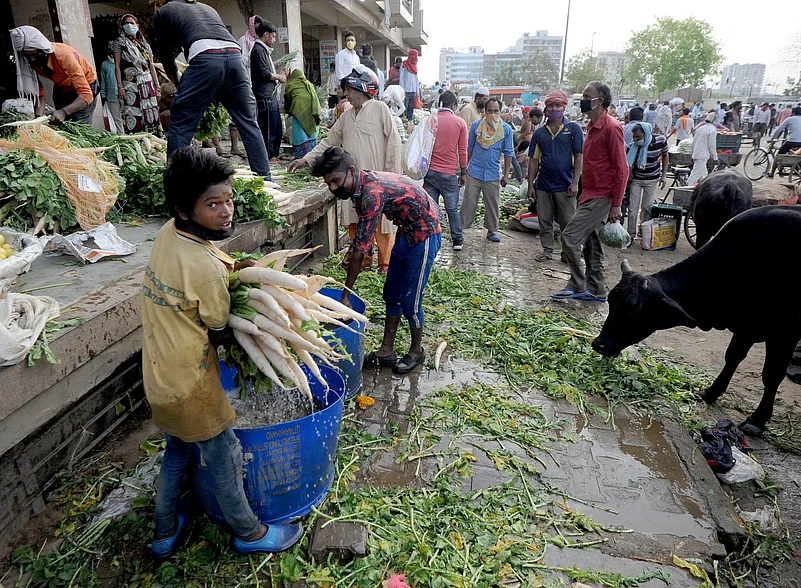Prices of vegetables and fruits have shot up both in metro cities and small towns. Due to the pandemic, the absence of transportation and labour continue to cause problems in mandis. The National Capital Region may also face a shortage of vegetables and fruits as the Delhi government has issued orders that from April 8 till the end of the lockdown period, no wholesalers “will be allowed to bring more than one truck per day of any commodity”.
The order says the violation would lead to strict action by the police.
“The latest government move will hit us badly. As it is, we are grappling with multiple challenges -- from the shortage of supplies to lack of buyers and labour for unloading. The filthy state of the mandis due to lack of labour is also a health hazard,” says Mahender Sanpal of Azadpur Vegetable Traders Association.

Ghazipur Mandi. Photo By Jitender Gupta
Vegetable prices are set to rise even more in the NCR. “We get products from different parts of the country – lemon from Gujarat, garlic from MP, onion from Rajasthan and Maharashtra. If the supply is hit due to the restrictions, the prices are bound to rise,” says Sanpal.
Already, the prices of most common vegetables have gone up by 20-25 per cent since the lockdown began. But Horticulture Commissioner Srinivas Murthy points out prices have only risen in places where there is a mismatch between demand and supply. “Around 70 per cent of the mandis are operational. But there are some issues due to labour problem which are being resolved now. We are trying to take actions to ensure a balance between food supply and the plight of the people,” he says. These steps have to bear fruit soon as the last thing a stressed population needs at this time is onions at Rs 200 a kilo.





















.jpg?w=200&auto=format%2Ccompress&fit=max)




